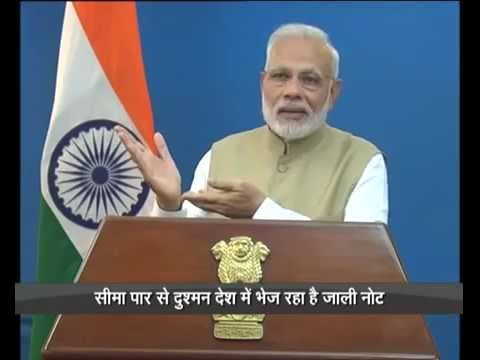Trump’s Tariffs Bring Back Demonetisation Memories
Both demonetisation and the Trump tariffs lack logic and are based on fanciful and incorrect assumptions
Since Donald Trump announced sweeping tariffs on imports from most of the world — including on some uninhabited islands — I have been trying to find fragments of economic logic in his decision. So far, I have failed.
But this failure wasn’t entirely fruitless. It led me to a sense of déjà vu. Trump’s tariffs bear a striking resemblance to Indian Prime Minister Narendra Modi’s 2016 demonetization move.
Both Trump’s tariffs and Modi’s demonetisation were designed to be disruptive. They were both supposed to put the great leader front and centre with a sense of theatre and ceremony dominating the announcement. There was a shock and awe strategy and both were “bold moves”, which in some circles is a virtue in and of itself regardless of the consequences.
Yet, both moves left experts, economists, journalists, and the average Joe searching for logic and reasoning. It’s been more than eight years since Modi’s demonetisation and as far I know, no one has yet succeeded in finding its rationale.
Both the tariffs and demonetisation were allegedly designed to benefit one group of people at the expense of another. Modi said that demonetisation will work like a wealth transfer from the rich to the poor by getting rid of black money (undeclared wealth), which, according to him, was held by rich people in large hordes of cash. In reality, it did the opposite.
Trump seems to be saying that the tariffs are a way to penalise countries that have been “ripping off” the United States because they have a trade surplus with them. The tariffs will, according to Trump, bring manufacturing of everything back to the US.
The “reciprocal tariffs” that Trump and his team have calculated are, as it turns out, not actually based on other countries' tariffs. The White House released what looks like a complex mathematical formula to calculate tariffs.
But, it is basically just taking US trade deficits with a country, dividing that by US imports from that country. Then halving the outcome and slapping that as the “reciprocal tariff.”
This has led to a situation where even countries like Switzerland which recently abolished all industrial tariffs, have been subjected to the “reciprocal tariffs” which is supposed to mean that they are being tariffed by the US because they impose tariffs on the US. But, that is not the case.
Demonetisation was equally illogical. The main stated aim of the move which wiped out 86% of India’s currency overnight was that it will remove black money from the economy.
The fanciful – or naive – assumption was that much of black money is held in cash. In fact, generations of self-respecting Indians have held undeclared wealth in a combination of gold, real estate and cash.
Eventually, 99.3% of the cash that was by invalidated by demonetisation came back to the central bank meaning that almost none of the black money was destroyed by the costly exercise which led to the deaths of atleast 93 people.
The central bank then had to spend billions reprinting the cash, in the same denomination, proving the whole exercise was pointless.
To add to the absurdity, a new ₹2,000 note was introduced during demonetisation, allegedly to curb corruption. Within two years, it was withdrawn—because it was aiding corruption.
In the end, demonetisation hurt the Indian economy, setting back its growth. In fact, the Indian economy has still not fully recovered from that shock.
Ultimately, both these interventions were not about improving the state of the respective nations. They were about display of strength at the expense of logic and economic sense. And they were about usurping more power by creating a sense of chaos.




